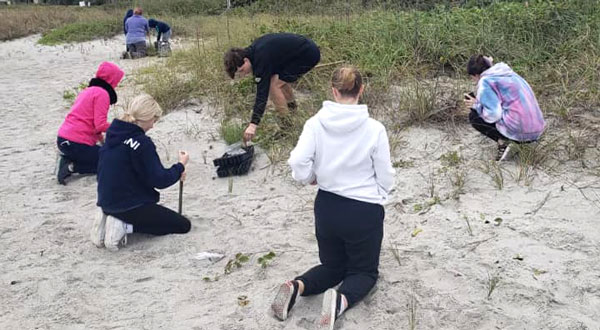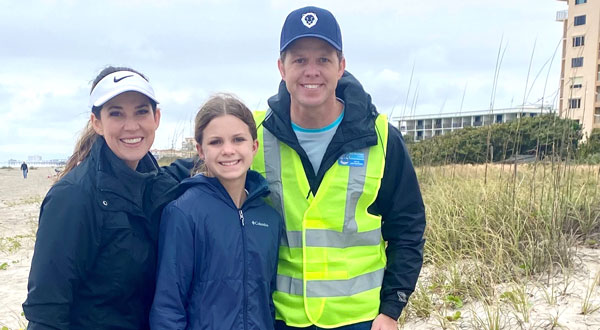City of Cape Canaveral Volunteers Plant 19,000 Sea Oats Across Two Miles of Beach
By Space Coast Daily // February 9, 2022
Since 2005, volunteers and City Staff have planted over 160,000 sea oats beachside

BREVARD COUNTY • CAPE CANAVERAL, FLORIDA – The City of Cape Canaveral held one of its largest planting events ever, managing to plant 19,000 sea oats across nearly two miles of beach with the help of dozens of dedicated volunteers.
Years of education and excellent results have reinforced the success of this program. Since 2005, volunteers and City Staff have planted over 160,000 sea oats beachside.
Each year the City utilizes Brevard County’s Sea Oat Sales Program to acquire sea oats.
■ 2005: 2,950 sea oats planted
■ 2006: 9,600 sea oats planted
■ 2007: 9,600 sea oats planted
■ 2008: 5,000 sea oats planted
■ 2009: 7,500 sea oats planted
■ 2010: 7,500 sea oats planted
■ 2011: 8,000 sea oats planted
■ 2012: 7,200 sea oats planted
■ 2013: 7,200 sea oats planted
■ 2014: 7,700 sea oats planted
■ 2015: 7,700 sea oats planted
■ 2016: 7,200 sea oats planted
■ 2017: 7,200 sea oats planted
■ 2018: 7,200 sea oats planted
■ 2019: 10,000 sea oats planted
■ 2020: 10,000 sea oats planted
■ 2021: 20,000 sea oats planted
■ 2022: 19,000 sea oats planted

In order to maintain and continually strengthen its dune system, the City hosts annual sea oats planting event. Sea oats are a perennial grass native to the U.S. southeast, being found anywhere from Texas to Virginia.
As they grow, the roots of the plants will burrow down several feet and form complex webs, which act to stabilize sand dunes and hold them in place.
Above ground, the sea oats’ long wispy reeds serve to catch wind blow sand, often leading to a buildup of material at the base of the plants.
Over time, this build-up will cause the sand dunes to increase in height. This height increase adds to the overall resilience of the beach by allowing it to be able to stop higher tides and storm surges from overtopping the dunes.
Wherever possible, the City of Cape Canaveral utilizes green infrastructure to increase its resilience against climate hazards such as coastal flooding and sea-level rise.

Being a barrier island municipality, the City regularly contends with powerful tropical cyclones and king tides. The City’s beach and its vegetated dune system are the first lines of defense when it comes to mitigating the impacts of these hazards.
According to the City’s 2021 Resiliency Action Plan, Preparedness Target #11 (page 49), the City is to plant over 220,000 sea oats beachside by 2036. At the current rate of plantings, the City will meet this target well ahead of schedule.
CLICK HERE FOR BREVARD COUNTY NEWS














